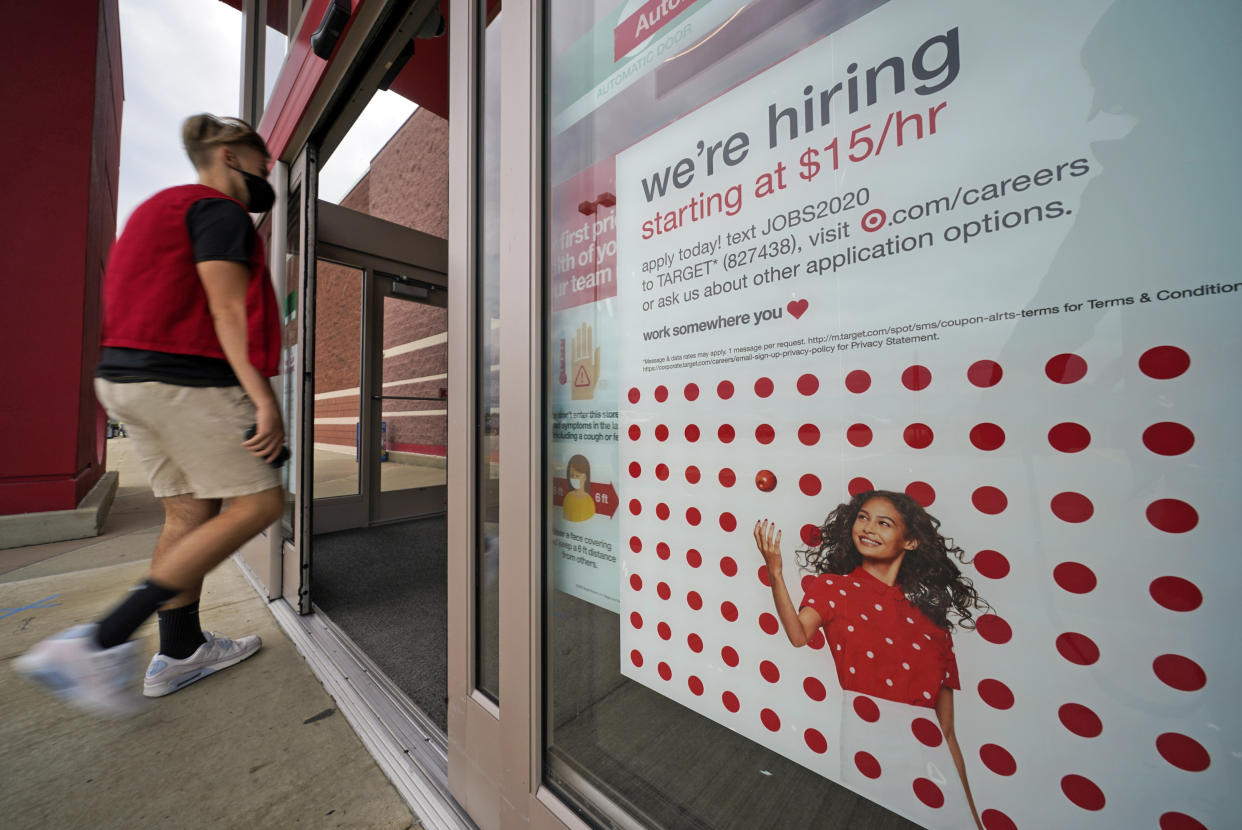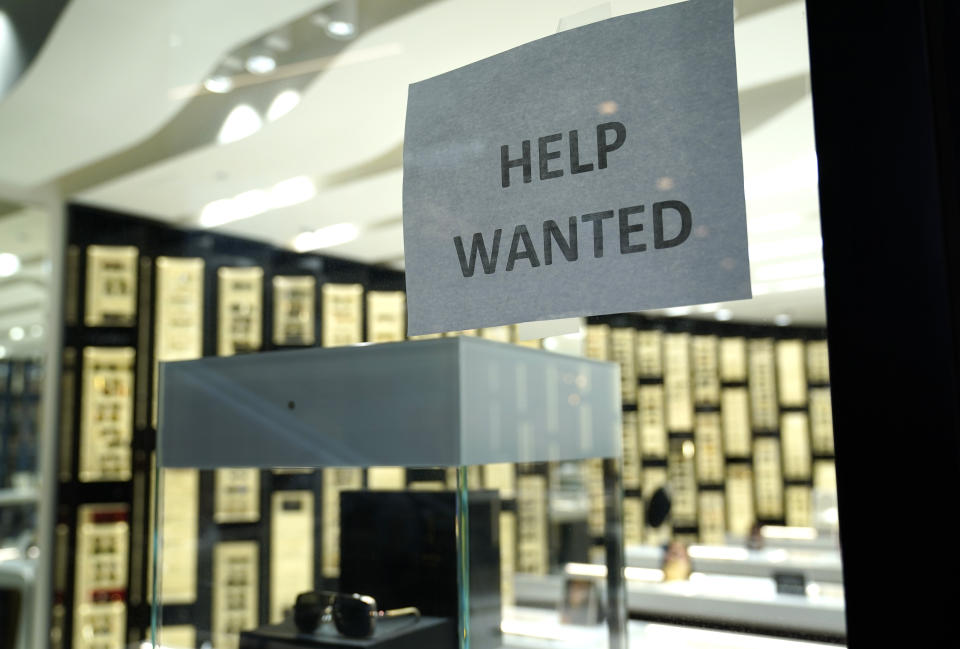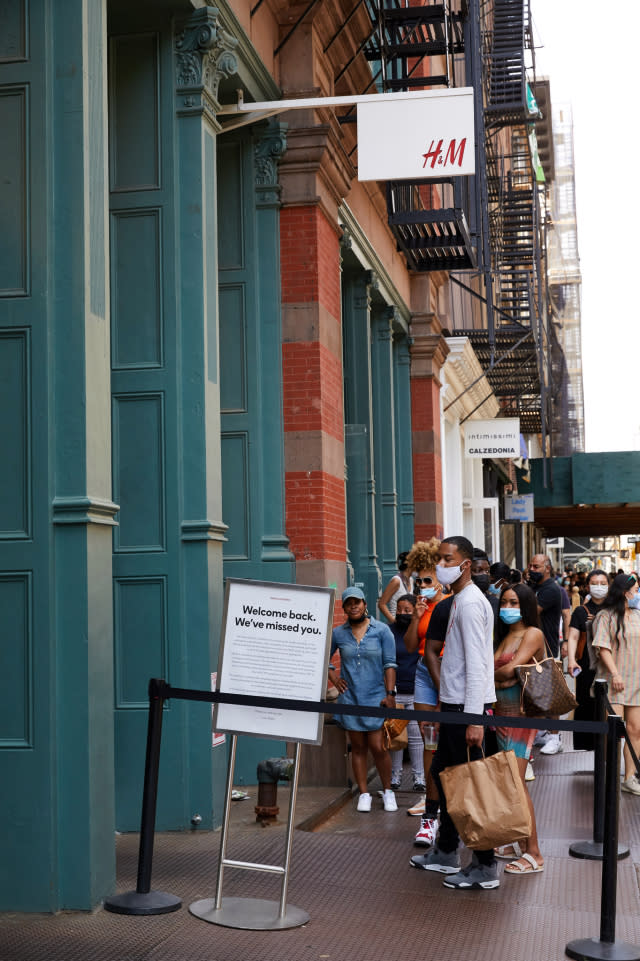Retailers Pine for Workers as Crucial Back-to-School and Holiday Seasons Approach

Help wanted. Seriously.
The nation’s labor shortage threatens to put a crimp on what’s expected to be robust back-to-school and holiday seasons for retail this year, based on the nation’s economic rebound, mall traffic picking up and consumers eager to update their wardrobes as they start socializing and returning to the office.
More from WWD
In the weeks ahead, retailers will put out their annual calls for seasonal help for the fourth quarter, but this time around it will be with a greater sense of urgency than years past and with more incentives embedded in the pitch.
“The labor shortage is absolutely going to be an issue for holiday,” said Steve Sadove, senior adviser for Mastercard and former chief executive officer and chairman of Saks Fifth Avenue. “What drives store volume is the experience, and part of the experience is having people who are knowledgeable, who are able to service the customer. Service is an important part of differentiation. There is this sense of urgency, as we are seeing traffic returning to the stores.”
Retail labor shortages in distribution centers, call centers and stores were induced by the pandemic, which forced many temporary and permanent closings and layoffs last year. Many furloughed employees decided not to go back to work, able to make ends meet through government stimulus assistance and unemployment checks, or because they were fearful of catching COVID-19 on the job.
The U.S. workforce is further reduced by the nation’s aging population retiring, America’s youth being less inclined to enter the workforce early, preferring in many cases to extend their educations, and others just feeling that retail jobs don’t pay enough. Last year, the median average of pay per hour for cashiers was $12.05; salespeople earned $13.02; stock clerks made $13.20 per hour, and supervisors, $19.86 per hour.
The U.S. unemployment rate was little changed at 5.9 percent in June 2021 from 5.8 percent in May 2021, the U.S. Bureau of Labor Statistics reported. Retail unemployment stands at 6.6 percent, with approximately 982,000 retail job openings as of last April, compared to 700,000 two years ago. As of December 2020, there were nearly 15.2 million retail employees in the U.S., down from 15.62 million in December 2019. The figures includes stores and retail offices, but not fulfillment and supply chain facilities.
Overall, U.S. job openings hit a record 9.3 million in April, according to the U.S. Department of Labor, though recently the department said employees added 850,000 jobs in June, the highest gain since August 2020, indicating that companies may be having an easier time finding workers to fill open jobs.
“The strength of our recovery is helping us flip the script,” President Joe Biden said, responding to the report. “Instead of workers competing for jobs that are scarce, employers are competing with each other to attract workers.”
Biden plans to let the federal unemployment benefits program expire after Labor Day and over two dozen states have been encouraging people to reenter the labor market by withdrawing from the federal program which has been giving unemployed workers an extra $300 a week.
Still, there’s ongoing pressure on retailers to raise wages to attract workers. Wage increases, along with supply shortages and port delays, all contribute to inflation.
Certain states have raised minimum wage requirements. California, for example, increased its minimum wage this year to $14 per hour for employers with 26 or more employees, and $13 per hour for employers with 25 or fewer employees.
The Biden administration has been pushing to raise the federal minimum wage to $15 minimum wage by 2025, which would raise the earnings of 32 million workers, or 21 percent of the workforce, and help keep people above the poverty level. President Biden did sign an executive order requiring federal contractors to pay a $15-an-hour minimum wage, up from $10.95, starting Jan. 30, 2022.
“The wage rate pressure is something we’ll continue to watch,” Jill Timm, Kohl’s Corp. chief financial officer, said in a recent conference call. “We’re taking that on a market-by-market basis. Our productivity in the stores has continued to increase to help us mitigate that, but that’s definitely a risk we’re watching depending on how the wage rate plays out.”

Lynne Sladky/AP
Regarding the labor market she noted, “There’s definitely been some concerns on labor, mainly for us in the distribution centers. So we’re addressing that appropriately, as well to make sure that we’re attracting the high amount of talent that we’re consistently had in those areas.”
On July 2, Kohl’s said hourly store, distribution center and e-commerce fulfillment center associates will be eligible to receive a bonus ranging from $100 to $400 for working through the holiday season. The Menomonee Falls, Wisc.-based company said the new bonuses reflect “continued investment in its associates,” and that it is actively hiring at stores, distribution centers and e-commerce fulfillment centers across the country. Kohl’s hosted its first nonseasonal hiring event at all of its stores nationwide on June 24 to 26. The goal was to hire 5,000 associates for both full- and part-time positions over the three-day hiring initiative.
The labor shortage “is a challenge, but we haven’t had terrible problems,” said Ken Hicks, chairman, president and CEO of Academy Sports and Outdoors Inc. Hicks said the degree of his company’s labor shortage differs depending on the market, and that it’s “more of a distribution center issue,” rather than a stores issue.
“Overall, we are OK. But we would like to there to be a better labor market,” said Hicks. “We are getting innovative in how we recruit and we’re working hard to retain people. We took our minimum up across the company. It does vary by area,” he said. “We feel right now we’ve got a good wage, but will make adjustments if we need to.”
Gap Inc. declined to comment on the nation’s labor shortage, but sent a statement to WWD indicating that as part of its efforts to drive diversity and inclusion, “We are continuously evolving and improving our recruiting strategies to widen the top of our recruiting funnel including creating early access programs, investing in learning and development opportunities, and putting a stronger focus on individual skills over background and industry. Some of the critical work we’re undertaking as we shift how and where we source talent to widen our funnel is adapting existing training and onboarding resources to new-hires who may not come from a traditional, or expected, pathway into a role. When we onboard a skills-based hire, who doesn’t come from a like-for-like company or vertical retail, then we need to develop a more dynamic training program to support their development and success with the role, team and business.”
In June, 70,000 Gap Inc. hourly employees at stores, distribution and customer contact centers received $300 bonuses for serving through “acute COVID-19 impacts.”
Mark Mathews, NRF’s vice president of research development and industry analysis, described the labor shortage as “acute, but not catastrophic.”
“Boomers for years have been retiring at a rate at which they’re not being replaced by other people in the economy,” Mathews said. Over the last decade, two million people per year on average have been retiring but in 2020, as the pandemic raged, the number jumped to three million, Mathews said. “People have been worried about going back to work in a pandemic. At the same time, we have a low level of teen employment. It has been decreasing rapidly. Parents are less focused on children needing work experience at younger ages, and more focused on academics and extracurriculars. It seems Gen Z is doing different things rather than entering the workforce.”
Mathews also said that through unemployment benefits, “People might be making more that way than on a job” and that the number of women citing child care as a reason not to go to work doubled in 2021 versus 2019.
However, Mathews did say there are sectors in retail where employment is higher than in 2019, including grocery stores, superstores selling general merchandise, garden supply and building supply stores. On the other hand, “Nonessential categories haven’t been able to build their workforce,” he said, citing apparel, sporting goods, hobbies and electronics retailers as being more impacted. Stores needing to fill jobs are mostly those that were shut down during the pandemic. “It’s hard to hire back,” Mathews said.
“During the pandemic, a lot of retailers laid off enormous numbers of people,” said Mastercard’s Sadove. “The unemployment rate went up to double-digit levels. People went on unemployment or found other types of jobs. A lot of people filling retail jobs have come back but you still have other people entering into other positions outside the retail workforce, or they decided they’re not going back to work and staying home. With the enhanced unemployment benefits, you have people finding what they are getting that way is higher than what they were getting in retail.
“It’s going to take time to work itself out,” Sadove added. “It’s a real, very serious issue, but there are lots of retailers doing creative things to enhance benefits. We are clearly seeing a push to higher wages. That puts cost pressures on retailers, but to attract employees they have to increase wages.”
“The whole labor shortage is impacting the traditional contact center model,” observed Greg Hanover, CEO of Liveops, the Scottsdale,Ariz.-based company that supports retailers’ e-commerce operations with its 27,000 “active agents” who work from home and provide customer care and sales help to retailers. “Sixty-three percent of our agents who support our retail customers used to work in retail stores, and have transitioned to working at home,” said Hanover. “A lot of people have gotten used to virtual work. They like it and want more virtual work where they stay at home.”
The pandemic and the retail labor shortage has benefitted Liveops’ business, which serves a spectrum of retailers including those specializing in sports, fashion and luxury goods. “Our retail business grew 95 percent from 2019 to 2020, and is up again this year, tracking 40 percent ahead,” said Hanover. “We give people the ability to work around their life.” He said outsourcing labor through Liveops saves retailers money. But he also acknowledged that the retail industry’s labor shortage is manageable. “It’s a point in time. As stimulus money dries up and unemployment aid goes away, you will see a rebound of people going back into the labor market.”
“As far as labor, we don’t have a whole lot of problems with retention, but hiring is harder than it was, both in the [distribution center] and in stores,” said Liz Mun?oz, CEO of Torrid, the plus-size retailer that went public July 1.
According to Torrid’s IPO prospectus, “The store employee turnover rate in the retail industry is generally high. Excessive store employee turnover will result in higher employee costs associated with finding, hiring and training new store employees.” Search firm Korn Ferry survey data showed that in 2019, before the pandemic, part-time hourly store employees had a turnover rate of 76 percent.

Masato Onoda/WWD
Torrid also indicated that an inability to hire store personnel “capable of consistently providing a high level of customer service” could impede plans to open new stores and impair the brand image. “Competition for such qualified individuals could require us to pay higher wages to attract a sufficient number of employees. Additionally, our labor costs are subject to many external factors, including unemployment levels, prevailing wage rates, minimum wage laws, potential collective bargaining arrangements, health insurance costs and other insurance costs and changes in employment and labor legislation or other workplace regulation — including changes in entitlement programs such as health insurance and paid leave programs. Such increase in labor costs may adversely impact our profitability, or if we fail to pay such higher wages we could suffer increased employee turnover.”
The nation’s labor shortage, according to Craig Johnson, president of Customer Growth Partners, “is going to affect retailers to some degree, but we don’t see it taking a giant bite out of business. There’s evidence of some sales being left on the table, though for the most part, companies are able to cope with the labor shortage much better than they used to, through labor scheduling software including A.I., adjusting pay scales and also by having the benefit of online operations where people don’t have to worry about waiting on line. D.C.s do have challenges of their own. There’s a slightly higher skill set needed in the D.C.s. But I don’t think it’s enough of a situation to turn a good season into a lousy season.”
Johnson said based on some mall walk-throughs, “Anecdotally, in excess of 80 percent of the stores have some sort of help wanted hiring sign, maybe on the storefront, or inside there is a little table to fit out forms or a sign directing you to the website,” for job applications. “I have never seen a similar comparison to this in my memory.”
Also, checkout lines appear longer, even at big stores, Johnson said. “At Burlington, you see a bank of 12 cash wrap stations and only two or three are manned and you have lines of 20 or so people, and Costco, a very well-run company, is not immune.”
A week ago, at the Costco in Niantic, Conn., Johnson saw only one person manning the exit where shoppers are asked to show their receipts, which the Costco associate compares to the merchandise in their shopping carts, whereas on other days, there would be two. Consequently, “There was a long exit queue,” said Johnson.
Sign up for WWD's Newsletter. For the latest news, follow us on Twitter, Facebook, and Instagram.